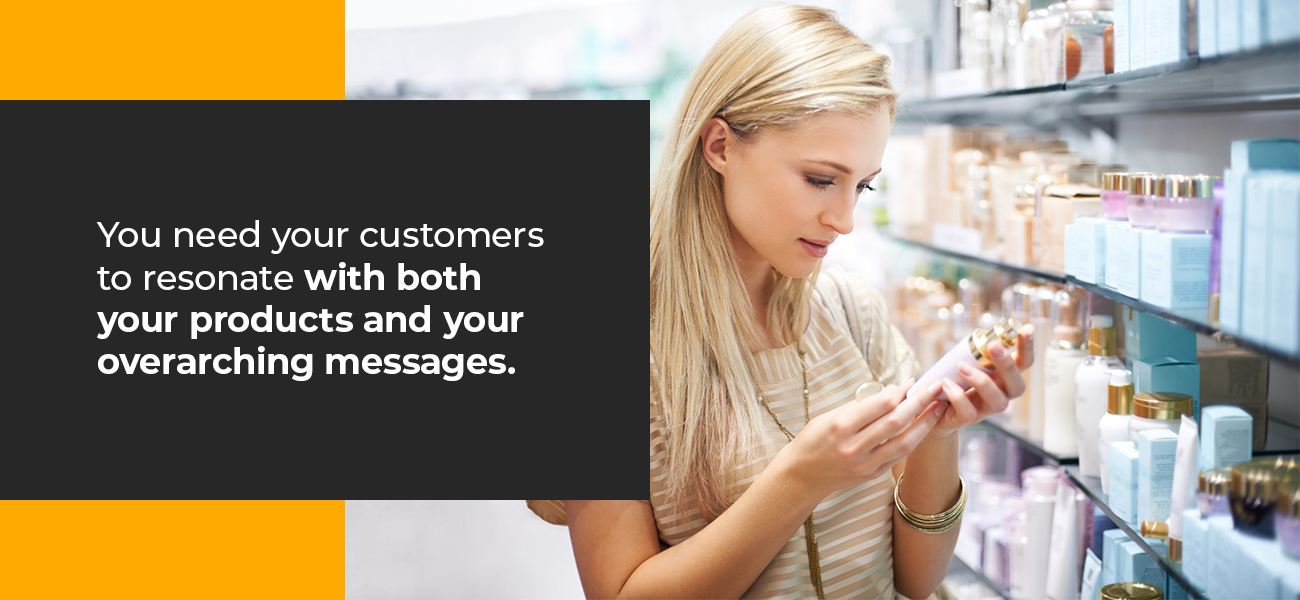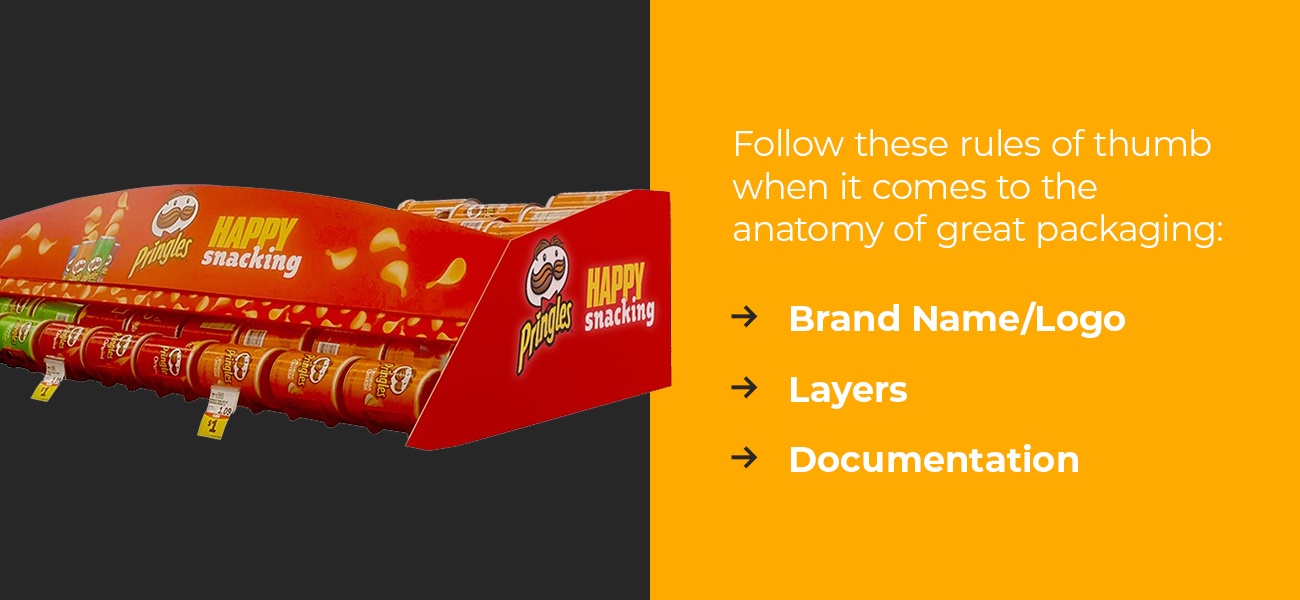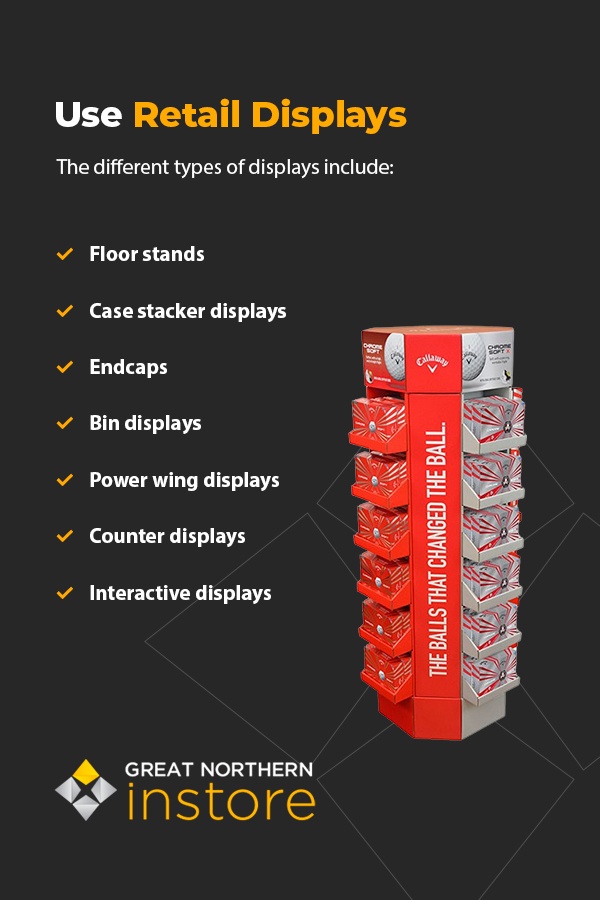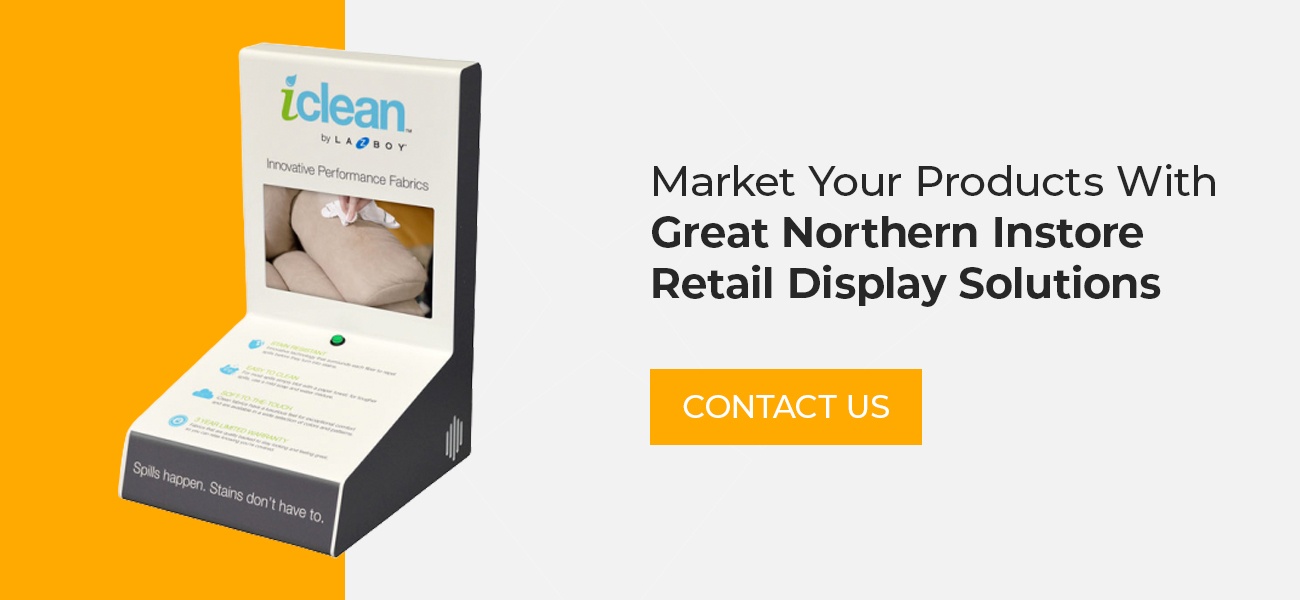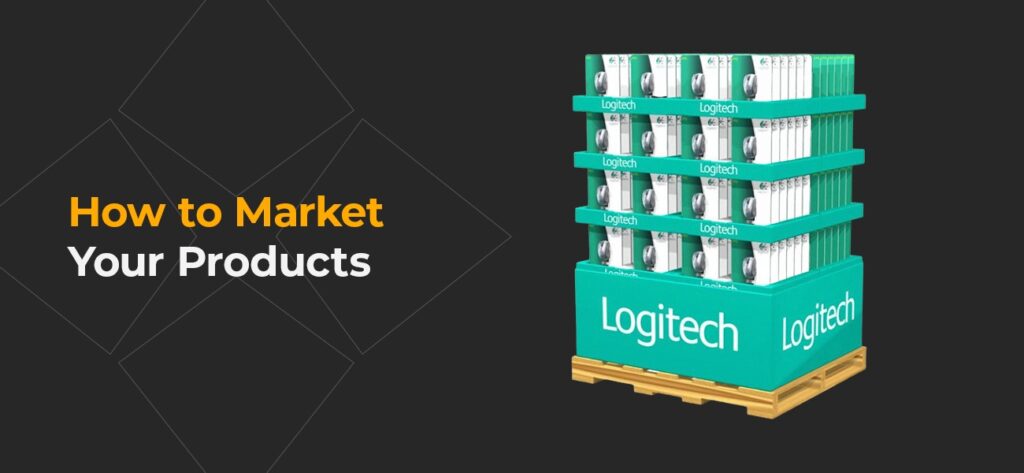
Getting a major retailer to sell your products is a massive achievement for any business. It gives your brand the credibility and exposure that selling direct-to-consumer cannot always offer. However, before getting your company’s products into the hands of shoppers, you will need to get them into the doors of retailers.
But how do you convince a retail store to distribute your company’s products, and how do you entice prospective customers to buy your products once they are available in-store? The answer to these questions is simple — excellent marketing.
Keep reading to maximize your company’s retail potential by learning how to market your product to retailers.
Steps to Build Your Branding
The goal of branding is to present a clear, unique identity that sets you apart from the competition while establishing your business’s values. From social media accounts to packaging designs, having consistent branding across all channels can lead to a 33% increase in revenue.
Maintaining consistent branding across all platforms allows a company to create brand recognition and build a loyal customer base. Ultimately, knowing your customers and the type of experience they want to have with your product will help you know how you would market your products.
Below are the steps you can take to create the most effective brand for your product.
Confusing branding with visuals is common, but not all aspects of branding are related to how your company looks — what you stand for is even more critical. To set yourself apart in a competitive market, you need your customers to resonate with both your products and your overarching messages.
Specify your brand’s goals and the impact you want your business to have on consumers. Consider these three points:
- Brand mission statement: This statement will communicate why the business exists and what changes it hopes to influence.
- Value proposition: As an extension of your mission statement, a value proposition explains who your business serves and how you serve them. Outline the benefits of your products and how they solve your customer’s problems here.
- Brand pillars: A brand’s pillars are an iteration of the core values and qualities that set your business apart from the competition and inform its operations. Consumers should be able to identify your pillars easily.
2. Find Your Unique Voice
With the information you gather about your business’s mission, it is now time to identify the perfect brand voice — something that feels inviting and different from the rest of the market. The right voice both reveals and reflects a company’s values, so it is important to have a strong understanding of your company’s mission and goals.
Like people, businesses have their own personalities. Consider the stark difference in brand voice between Old Spice and Dove. Old Spice is masculine yet goofy, while Dove is empowering and uplifting. Every brand has its own unique blend of characteristics when it comes to its voice. Choosing the right one will depend on your target markets and what elicits the best response from them.
Once you have navigated around what voice makes sense with your brand, you can start implementing that voice into the copy. No matter where the conversation is happening, your brand voice should be consistent across all platforms. This consistency creates uniformity and increases brand awareness. Platforms that require a tailored brand voice include:
- Social media accounts
- Websites
- Advertisements
- Customer service
- Packaging
3. Decide on Your Visual Identity
The visuals you choose to represent your business should align with your company’s values. This imagery should also be unique and recognizable for the consumer. Did you know that it takes, on average, seven times for a person to interact with a brand before they make a purchase? The rule of seven in marketing is an old trick marketers use to connect with customers according to this phenomenon.
Therefore, consistently showing up with a uniform branding identity — and the visuals to match — is crucial if your business wants to be memorable. There are different assets of your brand that make up its visual identity:
- Color palette
- Typography
- Logos
- Iconography
- Imagery
- Creative design
Whether you create them yourself, use an in-house team or hire an external artist, remember to incorporate your brand pillars and mission statement to maximize the positive impact of your visual identity.
With a clear idea of what the brand looks like, you can begin creating product packaging.
4. Create Great Product Packaging
Often, packaging is the first impression of a brand to potential shoppers. While packaging can be a fun and creative point in the marketing process, you must put intention behind it — 72% of American consumers admit that a product’s design influenced them to buy it. In other words, creating a visually appealing but informative packaging solution can skyrocket sales.
Ultimately, different industries require different kinds of packaging. However, companies of all industries should follow these rules of thumb when it comes to the anatomy of great packaging:
- Brand Name/Logo: Having your company’s name and logo located on the packaging in an easy-to-find spot is essential for building brand loyalty and recognition. Consumers should know exactly what brand created the goods in front of them.
- Layers: Consider how you intend to sell your product. What layers of packaging do you need? Each layer should fit together seamlessly and look cohesive.
- Documentation: Depending on the specifications of your industry, there are rules and regulations to follow when it comes to packaging. Sometimes, there is important documentation you should include on your products, such as nutrition facts or hazard warnings. All packaged consumer goods should adhere to the Fair Packaging and Labeling Act. These regulations require packaging to identify what you are selling. The name of the company, manufacturer or distributor of that product should be visible on the label. Lastly, the net quantity in weight, measure or count has to be present on the package.
Once you have gathered the information that needs to be on the packaging and have the written copy ready, it is time to move onto the fun and creative part of the process — design. It is no secret that retailers are looking to stock products that fly off the shelves. Having tailored packaging is an excellent way for a product to do some of the selling on its own.
There are a few design fundamentals to consider. First, your product packaging should be easily readable with a clear, easy-to-navigate design. All text should be visible and succinct while getting your message across. Next, you may want to consider sustainable packaging. Offering an eco-friendly design is a distinct selling point in a world where more customers are valuing green companies. Of course, you should also consider your design’s aesthetics — “Instagrammable” products are more likely to perform well for digital marketing efforts.
5. Gather Marketing Materials
In the broadest sense, marketing materials are communication tools that help a company share messages about its brand and encourage customer engagement. Some professionals refer to these materials as their company literature, since many utilize printed goods like brochures or business cards for promotional purposes.
Gathering marketing materials will be exponentially easier with great situated branding and product packaging. That said, there are so many marketing materials out there, so which ones will be the most beneficial when marketing products to retailers?
Here are some of the best materials for brands that want to market to retailers:
- Product line sheets: Having your products neatly mapped out with their specifications in one place is an amazing marketing tool. If you use product line sheets, ensure you brand them to match your company’s overall look and style. Additionally, your sheets should be as straightforward as possible — include the price and description of your products with high-quality images and SKU codes. Also, note any color and size variations if applicable to your industry or products.
- High-quality images: One of the least beneficial things you can do for your business is share low-quality content. Using high-quality images builds brand credibility and is more memorable in general. It is simple to incorporate stellar images on your website and social media to achieve this impact.
- Brochures: Like product line sheets, brochures allow retailers to get a quick overview of what you are trying to sell. One of the best aspects of brochures is their handiness. Prospective customers receive information about your products and a call-to-action all in one place.
- Social media: These days, social media is a must for all brands. It provides brands with numerous marketing tools, such as video ads and branded hashtags. Having this online presence also helps you quickly communicate with your customers and access their analytics. Presenting branded social media accounts is an impactful way to introduce your business to a retailer or wholesaler.
- Banner ads: Creating prepared banner ads for websites is an effective move for brands that want to market their products to retailers. It shows the retailer you are ready with a marketing strategy and resources. As a rule, banner ads should be eye-catching and attractive because retailers put these ads on their websites and social media pages. Make sure they are branded and professional to help you stand out.
When a company has marketing materials ready, it helps retailers sell more of their products. Showing up with these materials prepared signals to retailers that your brand is ready to be in their store.
6. Use Retail Displays
During any given in-person shopping excursion, you are likely to come across retail displays. These displays are often the first point of contact between shoppers and products, and they create an experience for the consumer they cannot get online. Keeping several retail displays can be a creative way to grab the attention of store goers and connect with your target market while they shop.
This marketing trick offers several brand benefits, like increased sales and awareness, without the need of a salesperson doing any convincing. Instead, shoppers will simply spot the display and walk over to it to check it out. If a retail display has an eye-catching design and an organized setup, customers will likely be convinced of the brand’s authority and expertise, helping them decide to buy the product.
One of the best things you can do if you want to get your products into stores is utilize retail displays. Despite the influx of e-commerce and online marketing, more than 85% of retail sales are made at brick-and-mortar locations. Therefore, retail displays can be a very profitable marketing option.
The flexibility of retail displays is another reason why they are so beneficial for retail marketing for products. These setups can be temporary or semi-permanent, which means swapping them out for new marketing campaigns is simple. The different types of displays include:
- Floor stands: These fixtures showcase your brand and products with a free-standing display that is sure to catch a shopper’s attention.
- Case stacker displays: A case stacker allows you to stack products from the ground up without violating any health codes or regulations.
- Endcaps: Placed at the end of an aisle, an endcap provides your products with plenty of exposure as they typically face higher traffic zones in stores.
- Bin displays: These provide a cost-effective way of displaying greater quantities of products that encourage impulse buys by customers.
- Power wing displays: Also referred to as “sidekicks,” power wings hang from store aisles and are practical for showcasing specific products.
- Counter displays: This type of display is usually positioned around check-outs, so they encourage last-minute sales and spotlight brand new products.
- Interactive displays: Equipped with different variations of controls like buttons or screens, interactive displays provide shoppers with a personalized experience.
When enhanced with your custom branding, retail displays allow your business’s products to stand out from the competition while simultaneously getting more exposure for your brand. If your company is not utilizing the power of retail displays, consider which kind would best illuminate your products and implement these displays into your marketing materials to see a boost in sales.
Market Your Products With Great Northern Instore Retail Display Solutions
Are you ready to utilize the power of retail displays for your brand? Great Northern Instore has established a collaborative blueprint for creating the best display specifically for your marketing needs. Unlike other retail display providers, you can rely on Great Northern Instore for your entire display experience, from shopper insights to in-store execution. No dream is too big when it comes to getting a custom, one-of-a-kind retail display.
Let Great Northern Instore help elevate your customer’s in-store experience and land deals with retailers. Contact Great Northern Instore to get a custom display estimate today.






